A compilation of 2017’s digital marketing research to help inform your 2018 strategy
Because the state of digital marketing is always evolving, it is important to keep up-to-date with the latest research in your industry, or marketing technique, to stay ahead of your competition. Yet, it can often be difficult to find the digital marketing research you need to help inform your digital strategy.
As we near the end of 2017, we have collected all of the research the team at Smart Insights have found helpful and informative. Hopefully, this will help you too!
SEO statistics 2017
- Organic search visits fall 3% as growth weakens across devices (Merkle, Digital Marketing Report Q3 2017)
- 61% of marketers say growing SEO/organic presence is a high inbound marketing priority (HubSpot, State of Inbound 2017)
- Media and publishing have the highest average Moz domain authority of 86 (Track Maven, 2017)
- 254/500 Small-medium businesses only have a basic understanding of SEO (Higher visibility, 2017)
- Google accounted for 91% of US site visits [roduced by mobile search in Q3 2017 (Merkle, Digital Marketing Report Q3 2017)
- In 2017, 48% of 1,200 global digital marketers say on-page SEO is still considered to be the most effective SEO tactic (Advanced Web Ranking, SEO stats report 2017)
- 65% of marketers agree that link building is the most difficult tactic to perform (Advanced Web Ranking, SEO stats report 2017)
- 50% of page-1 Google results are now HTTPS (Moz, 2017)
- As of April 2017, the global marketing share percentage, in terms of the use of Search Engines heavily favours Google, with over 77% (Smart Insights 2017)
- 18% of local searches done on mobile devices lead to a sale within a day (Junto 2017)
PPC and CTR statistics 2017
- Mobile adblock usage is surging internationally and has overtaken desktop usage (PageFair 2017)
- The global number of desktop and mobile devices that block ads grew by 142 million YoY to reach 615 million devices Dec 2015-Dec 2016 (PageFair 2017)
- 60% of consumers don’t know a Google advert when they see one (Smart Insights 2017)
- The average click-through rate in Facebook ads across all industries is .90% (WordStream 2017)
- The average click-through rate of a paid ad is 2%, yet ads in the first position earn an average click-through rate of almost 8% (Clever Clicks 2017)
- Both desktop and mobile ads deliver branding effectiveness but mobile ads perform better - particularly at the bottom of the funnel (comScore, The Global Mobile report 2017)
- 75% of people who find local, helpful information in search results are more likely to visit the physical stores. (Google 2017)
- Businesses make an average of $2 in revenue for every $1 they spend on AdWords. (Google Economic Impact Report)
- Google display campaigns reach 80% of global internet users (Google Benchmarks and Insights)
- Local Inventory Ads (LIA) accounted for 19 percent of all Google Shopping clicks on phones. CTRs on LIAs are 19 percent higher than PLAs on phone and desktop Merkle, Digital Marketing Report Q3 2017)
Digital strategy, transformation, and technologies statistics 2017
- Considering the most popular options in martech stacks, it’s no surprise that social media management (61%), search management (65%) and email marketing automation (46%) platforms were in place before 2017 with over a quarter with a new or updated solution in 2017 (Smart Insights, Managing Digital Marketing research report, 2017)
- 49% of organizations do not have a clearly defined digital marketing strategy (Smart Insights, Managing Digital Marketing research report, 2017)
- 37% of organizations have no plans to run a digital transformation programme (Smart Insights, Managing Digital Marketing research report, 2017)
- 39% of marketers don’t think their organization’s marketing strategy is effective (HubSpot, State of Inbound 2017)
- Only 6% of companies think their digital marketing and traditional marketing integration process was completely optimised (Smart Insights, Managing Digital Marketing research report, 2017)
- More than 8 in 10 (83%) of Account Based Marketers plan to expand their marketing stack for account-based marketing purposes in the next year (#flipmyfunnel Account-Based Marketing survey)
- Considering the marketing activities with the highest ROI, marketers consider organic search or SEO (32% rated highly for ROI), content marketing (30%) and email marketing (30%) the most effective (Smart Insights, Managing Digital Marketing research report, 2017)
- The modern living room features a multitude of connected devices, including significant innovation and adoption of OTT and IoT landscape (comScore, State of Digital, 2017)
- Sending/receiving emails (79%) and finding information about good and services (75%) are the most popular internet activities (UK National Statistics)
- 40% of marketers say proving the ROI of their marketing activities is their top marketing challenge. (HubSpot, State of Inbound 2017)
Ecommerce statistics 2017
- Email marketing and SEO are the most frequent sources of ecommerce traffic for respondents across all revenue ranges while channels such as affiliates and content marketing were less frequently used (MarketingSherpa ecommerce benchmarks 2017)
- Average ecommerce conversion rates are 1% – 2%. Even if you are doing everything right, you can still expect to win the sale around 2% of the time (BigCommerce 2017)
- For the majority of online transactions, the path from awareness to conversion is very short — 71% of consumers make their purchase within a week of awareness or desire (KPMG Global Survey - the truth about consumers 2017)
- Less than half (43%) of companies with online stores report seeing significant traffic from social media (MarketingSherpa ecommerce benchmarks 2017)
- In Q2 201, total digital commerce has grown to account for over 1 in every 6 discretionary dollars spent by consumers (Smart Insights, Q4 2017 Online Marketing Statistics)
- Consumers in Australia, New Zealand, Canada, France, Belgium and South Africa were most likely to be influenced by price or promotions. In these countries, more than 38 % of consumers said price and promotions were the factors that drove their most recent product choice (KPMG Global Survey - the truth about consumers 2017)
- 64% of consumers say that watching a video on social media influenced them to make a purchase (Animoto, 2017)
- 22% of omni-channel sellers sell through other marketplaces (including Amazon, Etsy, eBay, etc. (BigCommerce 2017)
- Ecommerce is growing 23% year-over-year, yet 46% of American small businesses do not have a website (BigCommerce 2017)
- 37% of online spend in the US and Europe is now made through Amazon. This figure is 57% for US consumers (Salmon 2017)
Content Marketing statistics 2017
- 53% of marketers say blog content creation is their top inbound marketing priority. (HubSpot, State of Inbound 2017)
- Content marketing has become an almost universal tactic, with almost 90% of companies using it in 2016, and even more utilizing it in 2017 (Content Marketing Institute B2B Content Marketing)
- The majority of content marketing has limited impact with 75% of blog posts getting fewer than 10 social shares and zero links from other domains (Buzzsumo and Moz)
- 70% of marketers lack a consistent or integrated content strategy (Altimeter)
- 87% of B2B buyers give more credence to industry influencer content. Buyers also indicated they give more credence to peer reviews, third-party publications, and user-generated feedback. More than two thirds (68 percent) of buyers said they frequently give credence to peer reviews and user-generated feedback. Sixty percent give credence to content authored by a third-party publication or analyst.(DemandGen Report – 2017 Content Preferences Survey)
- Top five B2B content marketing tactics: Social media content (92%); eNewsletters (83%); articles on your website (81%); blogs (80%); in-person events (77%). (IMN Inc.)
- Third-party/analyst reports (77%) is the most valuable B2B content viewed during decision-making process (B2B content preferences report, 2016)
- 54% of B2B marketers rate their content marketing strategy as ‘moderately effective’ (Smart Insights)
- Marketers believe research reports (46%) generate leads with the highest customer conversion rate (Ascend2 - Lead Generation to increase conversions report)
- 60% of marketers create at least one piece of content each day. (eMarketer)
Social media statistics 2017
- Facebook provides the highest social value for B2C (96%) whereas Linkedin provides the highest social value for B2B (93%) (Smart Insights and Clutch, 2017)
- Written articles (27%), videos (26%), and images (24%) are the three most engaging content on social media (Smart Insights and Clutch, 2017)
- Only 5% of web-using adults have a lot of trust in the information they get from social media (Key trends in social and digital news media, Pew Research Center, 2017)
- 70% of Instagram posts don’t get seen (Independent, 2017)
- Social Media captures over 30% of online time (Global web index, 2017)
- 40% of internet users are most likely to use social networks to keep in touch with what their friends are doing, whilst only 27% use social to research/find products to buy (Global Web Index, 2017)
- 25% of Instagram ads are single videos (Sprout social, 2017)
- Social Media and video viewing are the two most popular online activities, together accounting for more than a third of all internet time (Smart Insights, Q4 2017 Online Marketing Statistics)
- 86% of consumers prefer more authentic and honest brand personality (Sprout social, 2017)
- User-generated content has a 4.5% higher conversion rate (Sprout Soical, 2017)
Mobile Marketing statistics 2017
- 1 in 3 Gen Z in North America are using voice command on Mobile (Global Web Index 2017)
- UK users spend almost 2 hours per day online via mobile (Global Web Index)
- Increasing brand awareness and engagement are the biggest objectives for mobile advertising (Brand Quarterly, State of Mobile 2017)
- Mobile now represents almost 7 in 10 digital media minutes, and smartphone apps alone account for half of all digital time spent (comScore, U.S cross-platform future in focus 2017)
- Creating personalized customer experiences (32%) is the greatest long-term growth potential for mobile products (Open Mobile Media, State of Mobile 2017)
- 48% of cousers start mobile research from search engines – (Smart Insights, 2017)
- Targeted mobile ad spend will grow from $12.4 billion in 2016 to $32.4 billion in 2021 – (BIA/Kelsey, 2017)
- Avg. page load speed on mobile sites is 22 seconds – (Think With Google, 2017)
- A 10 second page load time has a 123% higher bounce rate than a 1 second page load time (Think With Google, 2017)
- 69% of digital media time is spent on mobile (comScore, 2017)
Email Marketing statistic 2017
- 29.8% of marketers believe their email marketing is average (Smart Insights and GetResponse, 2017)
- Limited internal resources (28%), lack of strategy (28%) and lack of content (23%) are the biggest challenges to delivering successfully automated email marketing programs (DMA, Marketer Email Tracking Study, 2017)
- PC and tablet users have unique click rates of 3.8%, a 40% increase over the 2.7% mobile click rate (MailChimp, Impact of Mobile use on Email 2017)
- Marketers are out of touch with what customers want - they see trustworthy reputation (38%) and exclusive content (29%) as the most effective for sign-ups but consumers want money-off discounts (45%), free samples (35%) and free delivery (35%) (DMA, Marketer Email Tracking Study, 2017)
- Personalized email content based on software/machine learning is 55% effective (OneSpot, The return of Email personalization, 2017)
- Open rate has increased from 35% to 58%, unique open rate has increased from 15% to 25%, click rate has decreased from 10.8% to 3.8%, unique click rate has increased from 2.1% to 2.5% (SendGrid, 2017 Global Email Benchmark Report)
- Over 205 billion emails are sent every day - a figure expected to grow by 3% each year (Radicati)
- Open rates are 14.31% higher in segmented campaigns than in non-segmented campaigns (MailChimp, 2017)
- Clicks are 74.53% higher than non-segmented campaigns (MailChimp, 2017)
- 80% of marketers are now carrying out basic segmentation, with a further 14% planning to do this in the future (Adestra, Email Marketing Industry Census 2017)
For more email statistics and benchmarks, we have a full compilation on open and clickthrough rates for email campaigns in the UK.
Influencer Marketing statistics 2017
- Influencer marketing will be integrated in all marketing activities for the majority of marketers (Traakr Influence 2.0: The future of Influencer Marketing 2017)
- 84% of Marketers worldwide say they would launch at least one influencer campaign within the next 12 months (Smart Insights 2017)
- 70% of teenage YouTube subscribers trust influencer opinions over traditional celebrities (Google, 2016)
- 86% of women turn to social networks before making a purchase (Alist daily, 2016)
- 71% of consumers are more likely to make a purchase based on a social media reference (Alist daily, 2016)
- 48% of marketers planned to increase their influencer marketing budgets in 2017 (Linqua, 2017)
- Over half of internet users say they follow some sort of celebrity account on social, with figures reaching as high as 68% among 16-24s (Global web index, 2017)
- Advertisers that implemented Influencer Marketing in 2016 received $11.69 in Earned Media Value (EMV) on average for every $1.00 they spent (RhythmOne)
- 71% of luxury brands measure influencer success through web traffic (Econsultancy 2017)
- YouTubers with over 7 million followers are earning $300,000 on average, Facebook and Instagram accounts with over 7 million followers are also getting over half that amount too (The Economist)
Other (UX, Video, ABM etc.)
- Video will make up 80% of consumer online traffic by 2020 (Animoto, 2017)
- 96% of consumers ages 18-34 watch a social video a few times a week and 75% of millennials watch video at least daily (Animoto, 2017)
- 18 videos are published per month by businesses (Hubspot, 2017)
- 62% of marketers plan to increase their investment in Facebook video in the next year (Animoto, 2017)
- Facebook generates 8 billion video views on average per day (Social Media Today)
- Users who have a bad mobile user experience are 60% less likely to revisit and purchase from that brand in future (Smart Insights 2017)
- Diary studies are used by just 2 in 10 (22%) researchers and just under half (47%) use search log analysis (NNG, user experience careers)
- Global cart abandonment rates have increased 1.3% (up on the previous quarter) to 76.9% (SalesCycle, The remarketing report)
- VR devices are currently too expensive according to 66% of respondents and the majority (86%) would like to try VR before buying (Ipsos MORI via Marketing Week)
- 17% of users delete apps because they are not useful and 17% delete them because they take up too much storage space (MarketingSherpa, Customer Satisfaction Research Survey)
- Youtube remains the top content distributional channel to add into a marketing strategy (49-52%), within the next 12 months (HubSpot, State of Inbound 2017)
- Over half (52%) of consumers want a fast response to their issues, something that can be hard to achieve with an automated service (Smart Insights)
- 27% of users skip video ads because they don’t like video ads that play before the video they want to see (Smart Insights)
- 21% of respondents characterize Sales and marketings relationship as either misaligned or 'don’t know' (HubSpot, State of Inbound 2017)
- Marketing priorities include converting leads to customers (70%) and attracting visitors to their site (55%) whilst considerably less (29%) said sales enablement was a top priority (HubSpot, State of Inbound 2017)
from Blog – Smart Insights http://www.smartinsights.com/digital-marketing-strategy/100-must-see-marketing-stats/
via Tumblr http://euro3plast-fr.tumblr.com/post/166814547204
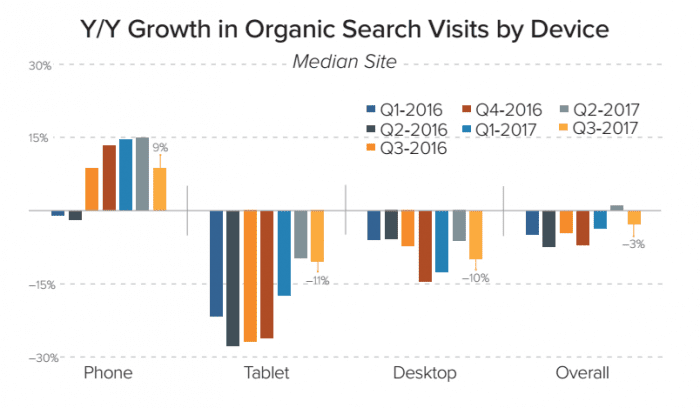
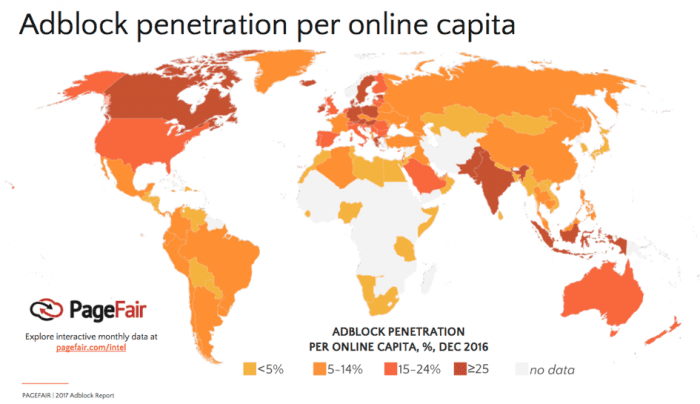
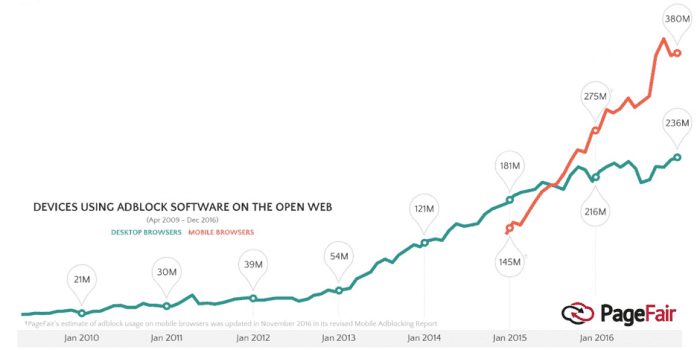
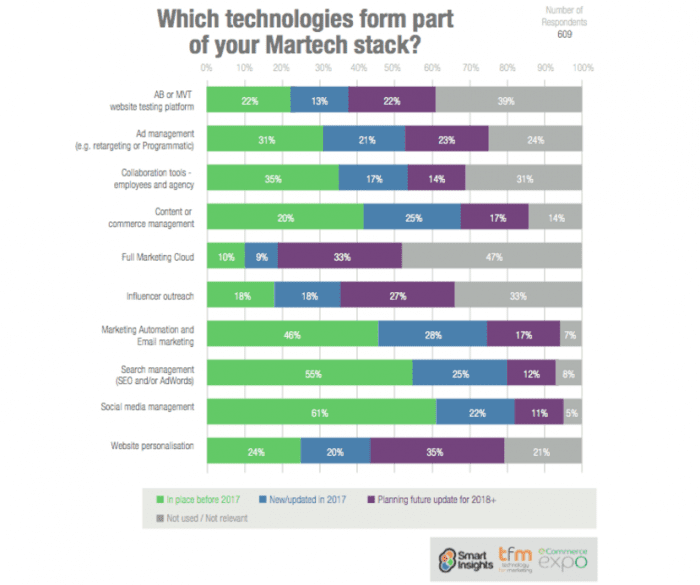
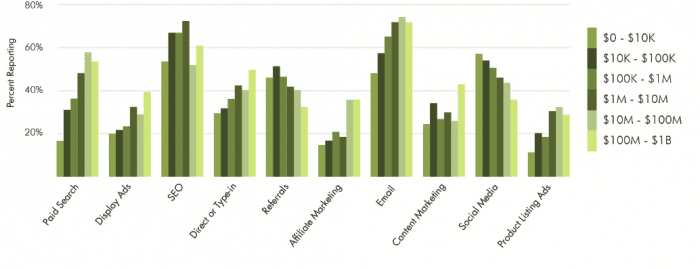
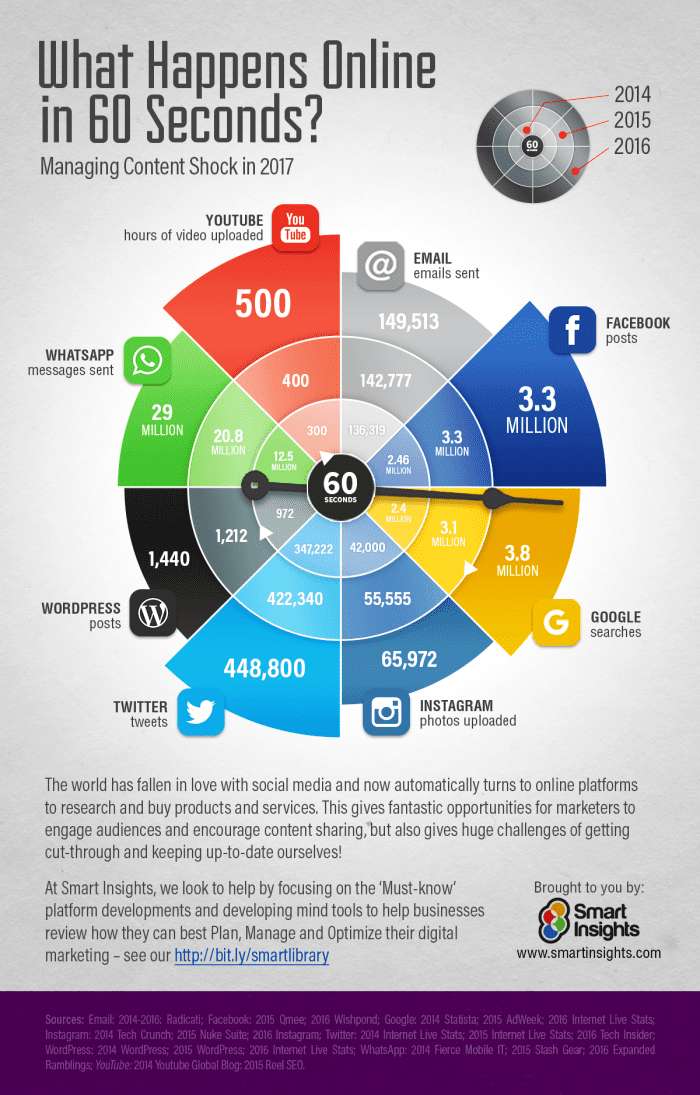
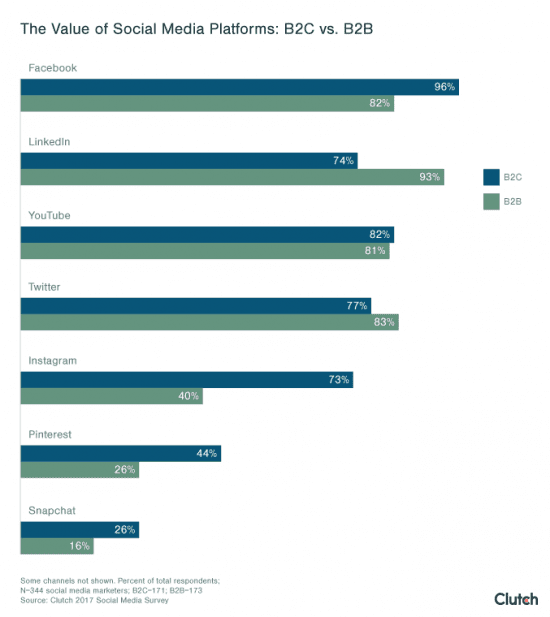
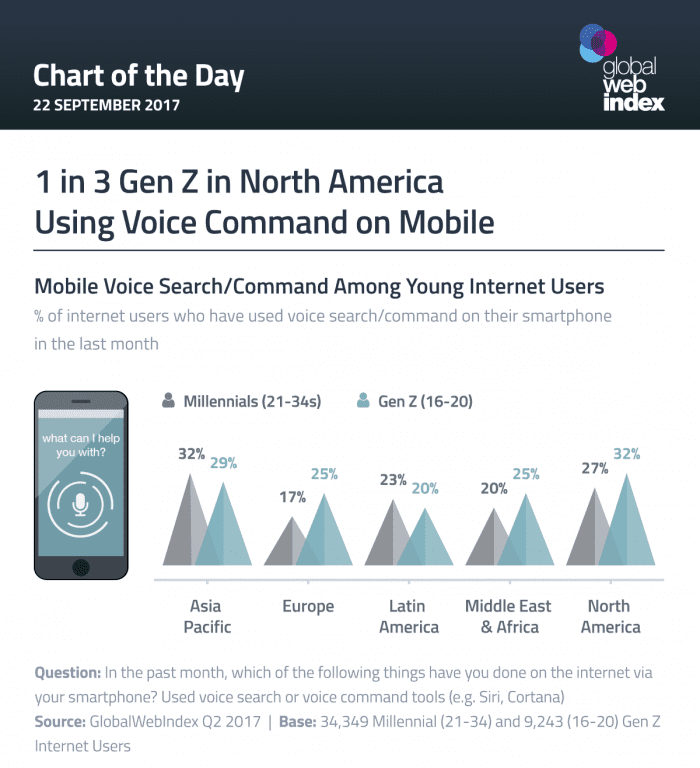
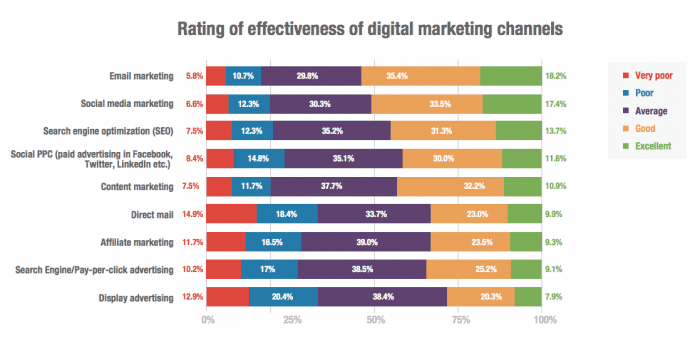
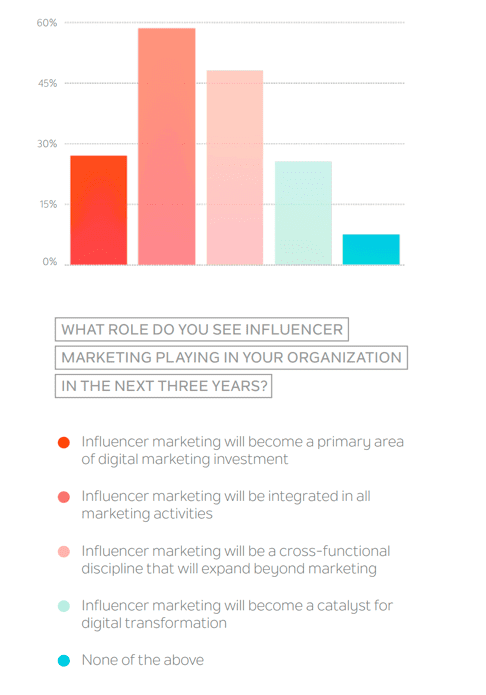
No comments:
Post a Comment